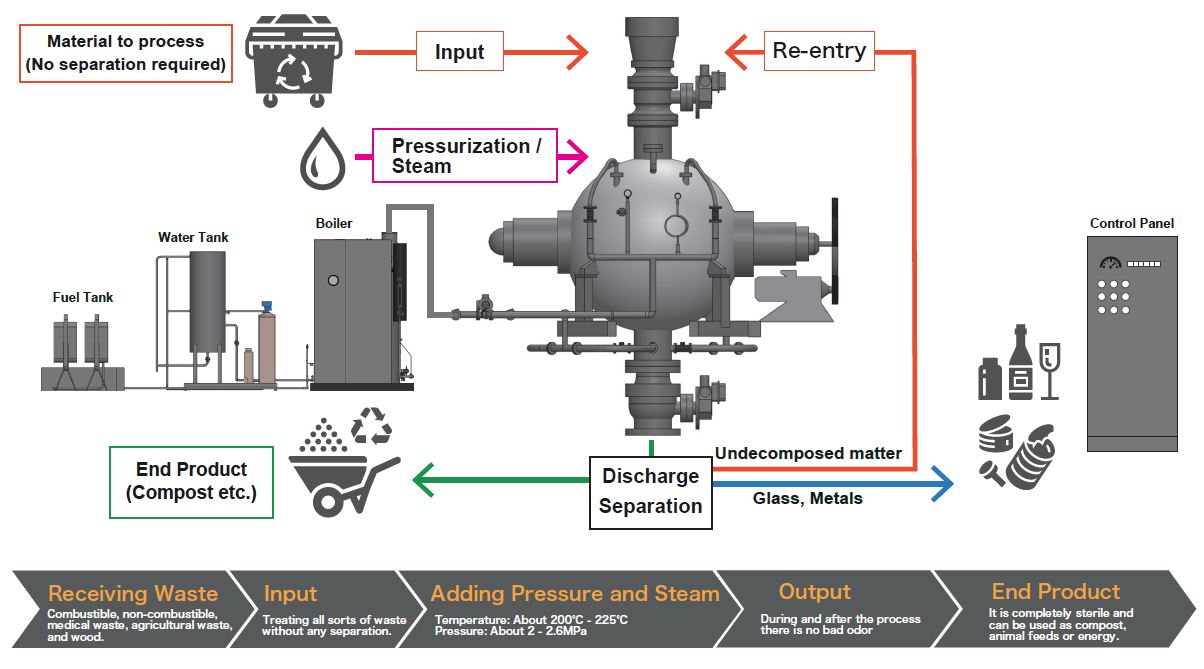
MACRO-EHP SERIES
MACRO-EHP SERIES
Subcritical treatment equipment that safely and reliably treats all organic waste
What is subcritical treatment?
It is the process of decomposing organic matter in a short period of time by hydrolysis in subcritical waters under high pressure environment.
It treat medical waste safely and efficiently. We are aiming to solve the world's waste problems and contribute to the environment, food and agriculture.
What is a subcritical water area?
Water is a liquid at room temperature and boils at 100°C under atmospheric pressure (1 atm) to become a gas.
However, when the pressure exceeds the critical point of 22 MPa (about 220 atm) and the temperature of 374°C, it becomes neither a liquid nor a gas, resulting into a supercritical water state.
The area near this critical point is called the subcritical water area.
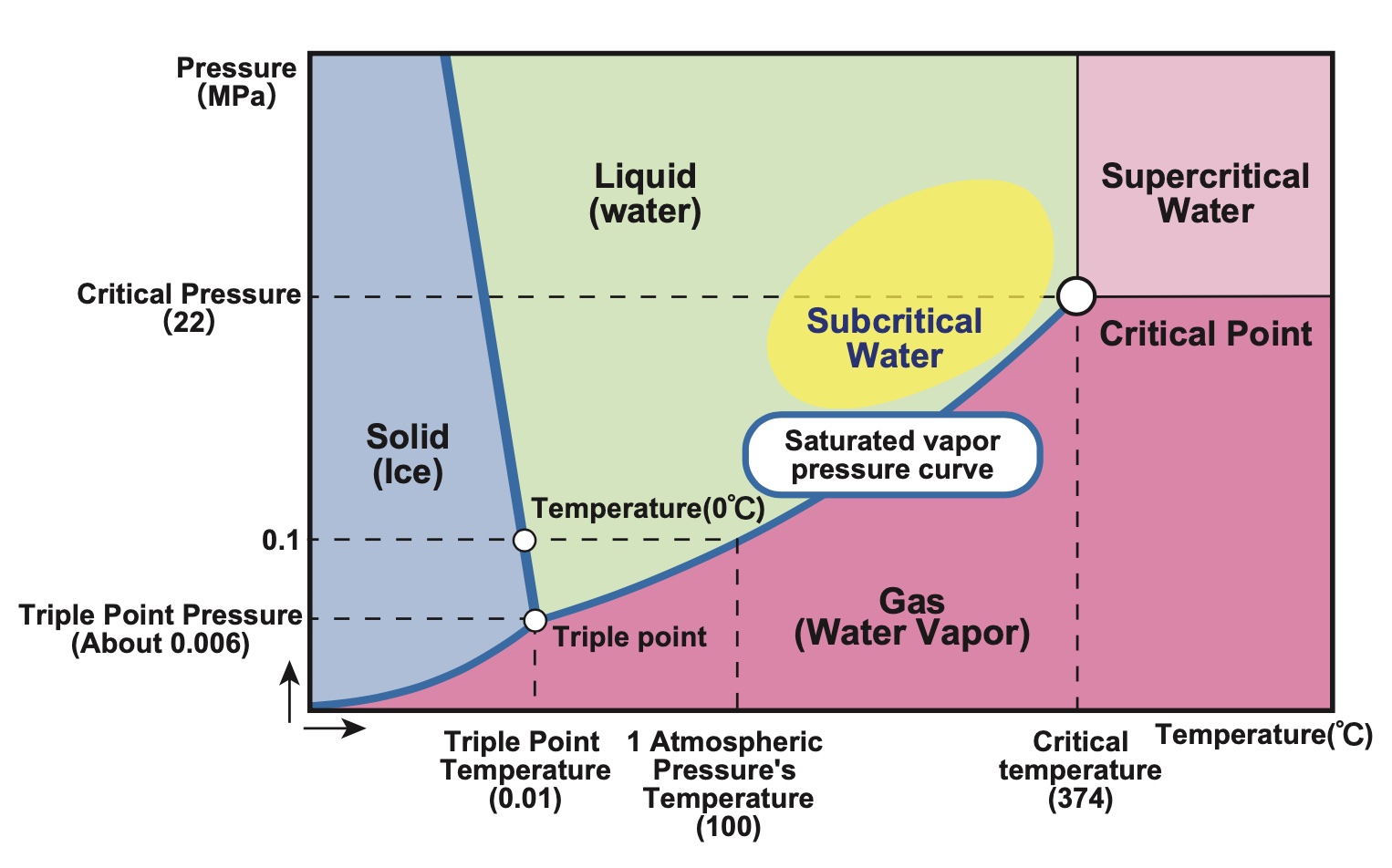
What is hydrolyzing action?
Water is ionized due to collision of water molecules even at normal temperature and pressure. As the temperature rises, the collision frequency of water molecules also rises and the ionization progresses. This ionization generates hydroxide ions (OH-), but in the critical water the concentration gets higher.
This hydroxide ion hydrolyzes the peptide bond of the protein to produce amino acids. Lipids and carbohydrates are also hydrolyzed into fatty acids and glucose respectively by the same mechanism.
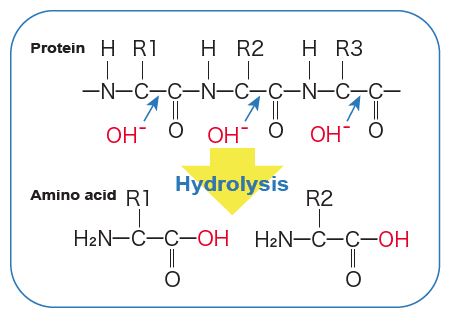
MACRO-EHP SERIES
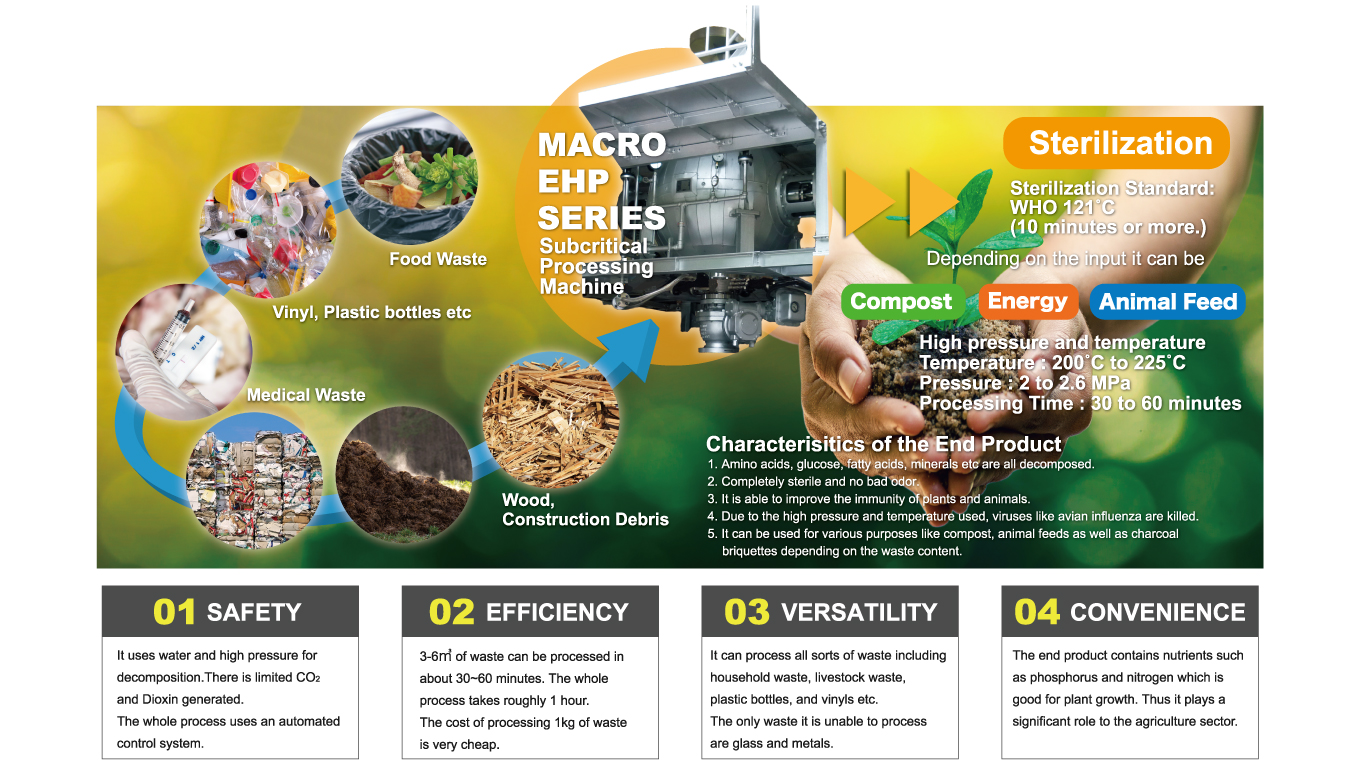
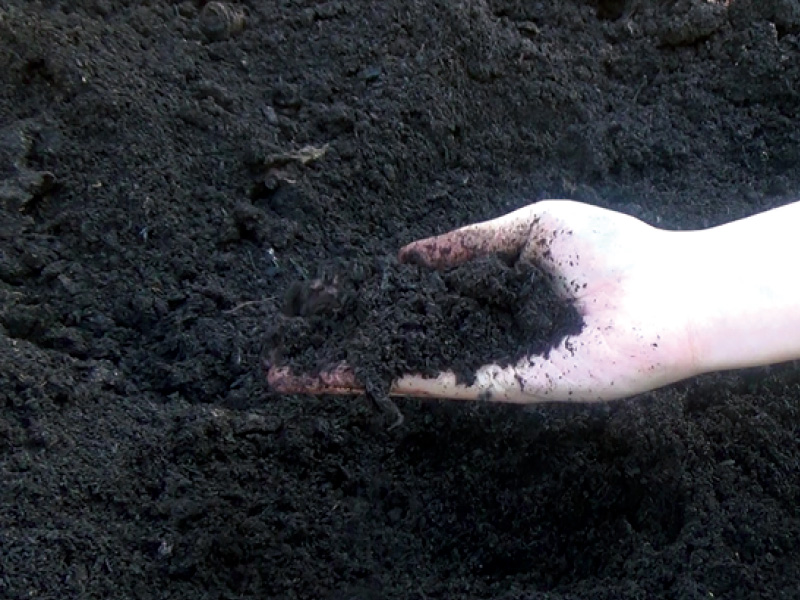
▲Product processed by MACRO-EHP
Characteristics of high-temperature and high-pressure processed products
- Amino acids, glucose, fatty acids, minerals, etc. are decomposed into small organic substances.
- Since the processing machine is in a sealed state, there is no unpleasant odor in the products as well as during operation.
- The immunity of the animals and plants themselves is increased, the growth of pests and germs is suppressed, and production efficiency is increased.
- Due to the sterilization by high-temperature and high-pressure treatment, the viruses such as bird flu are completely killed and harmless.
- Depending on the material and method to be processed, it can be used as feed or fuel.
●A Recyclable Resource that is Safe and Sterile!
●Energy Saving with a Low Cost Performance!
Treatment process
